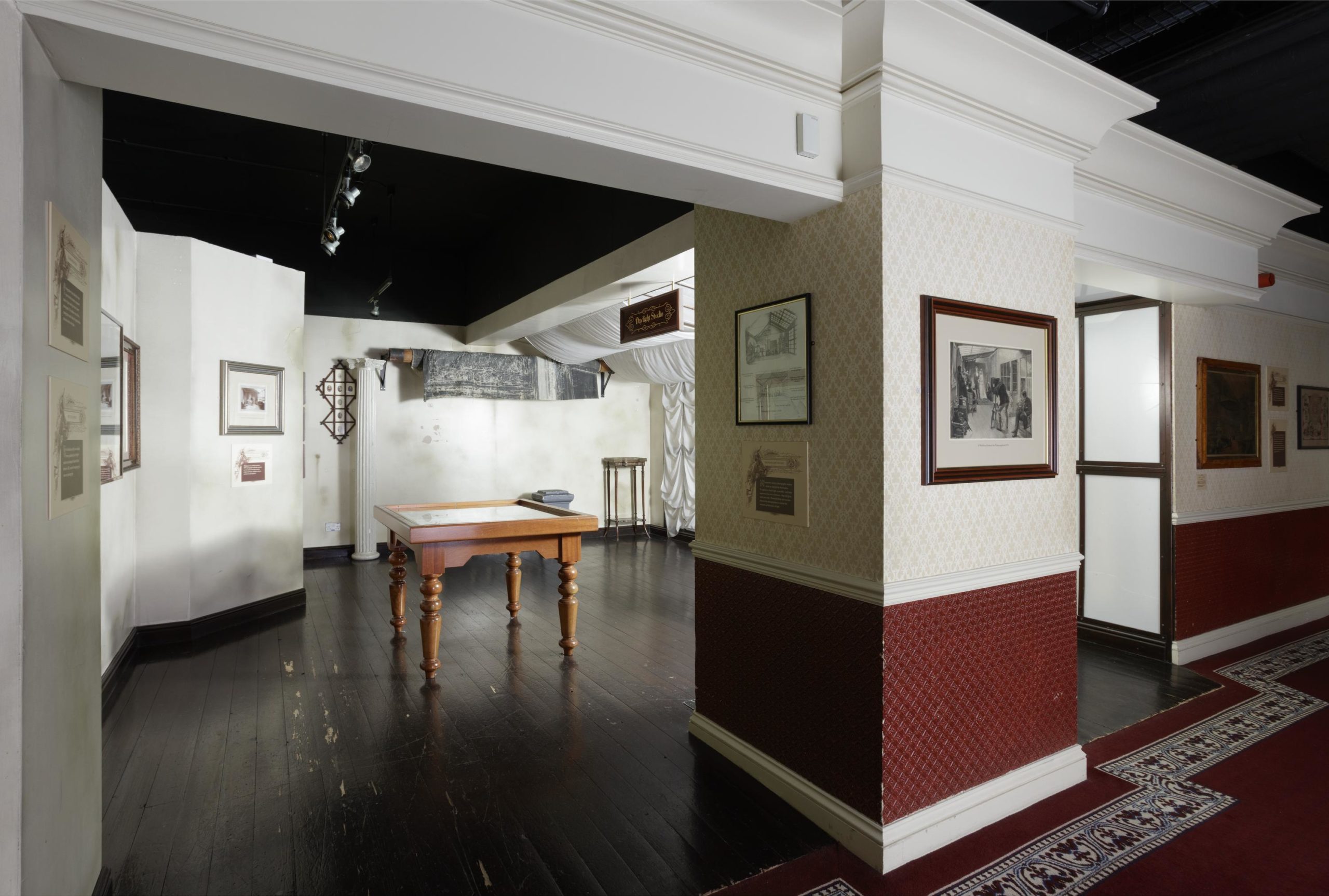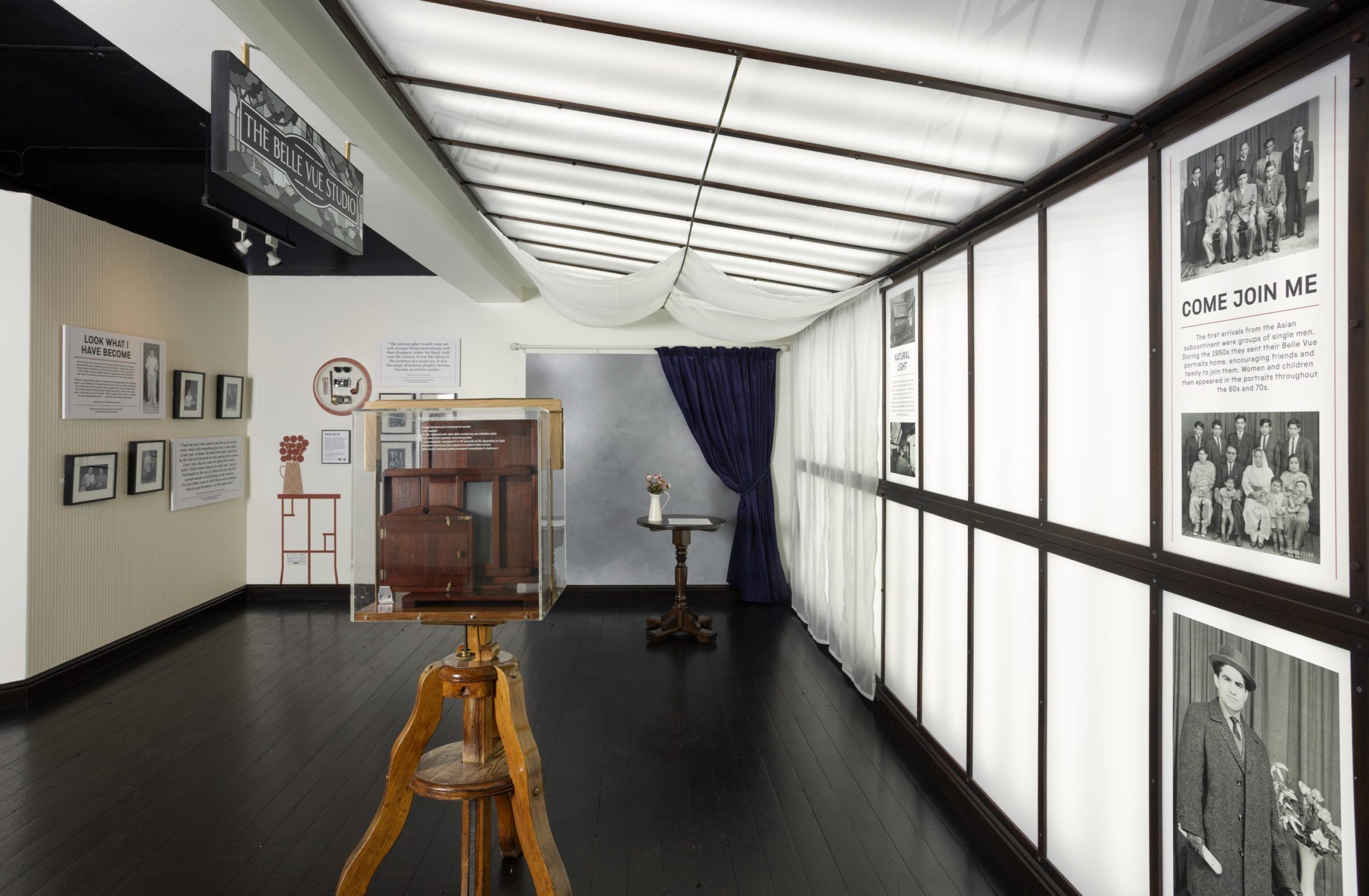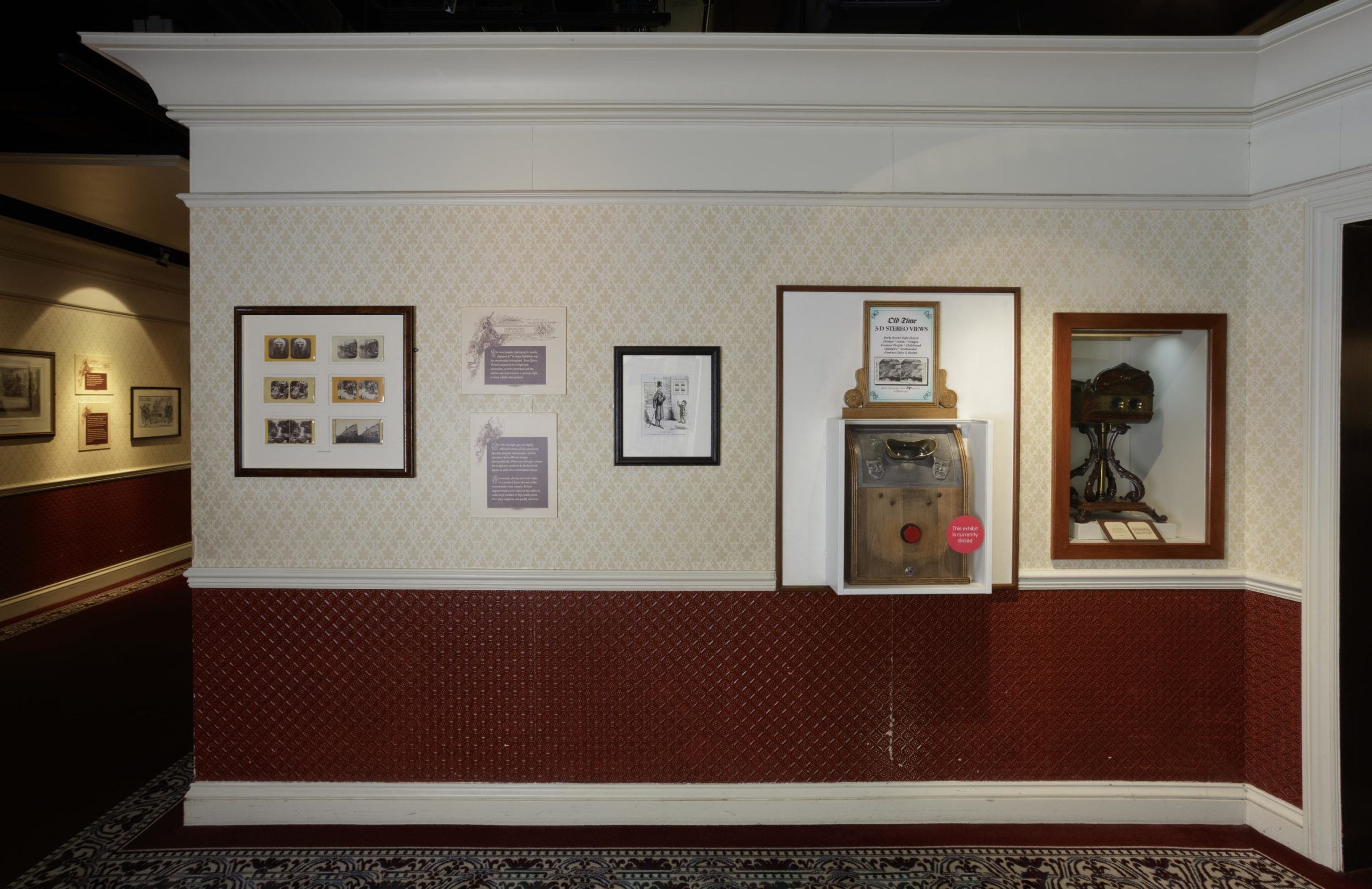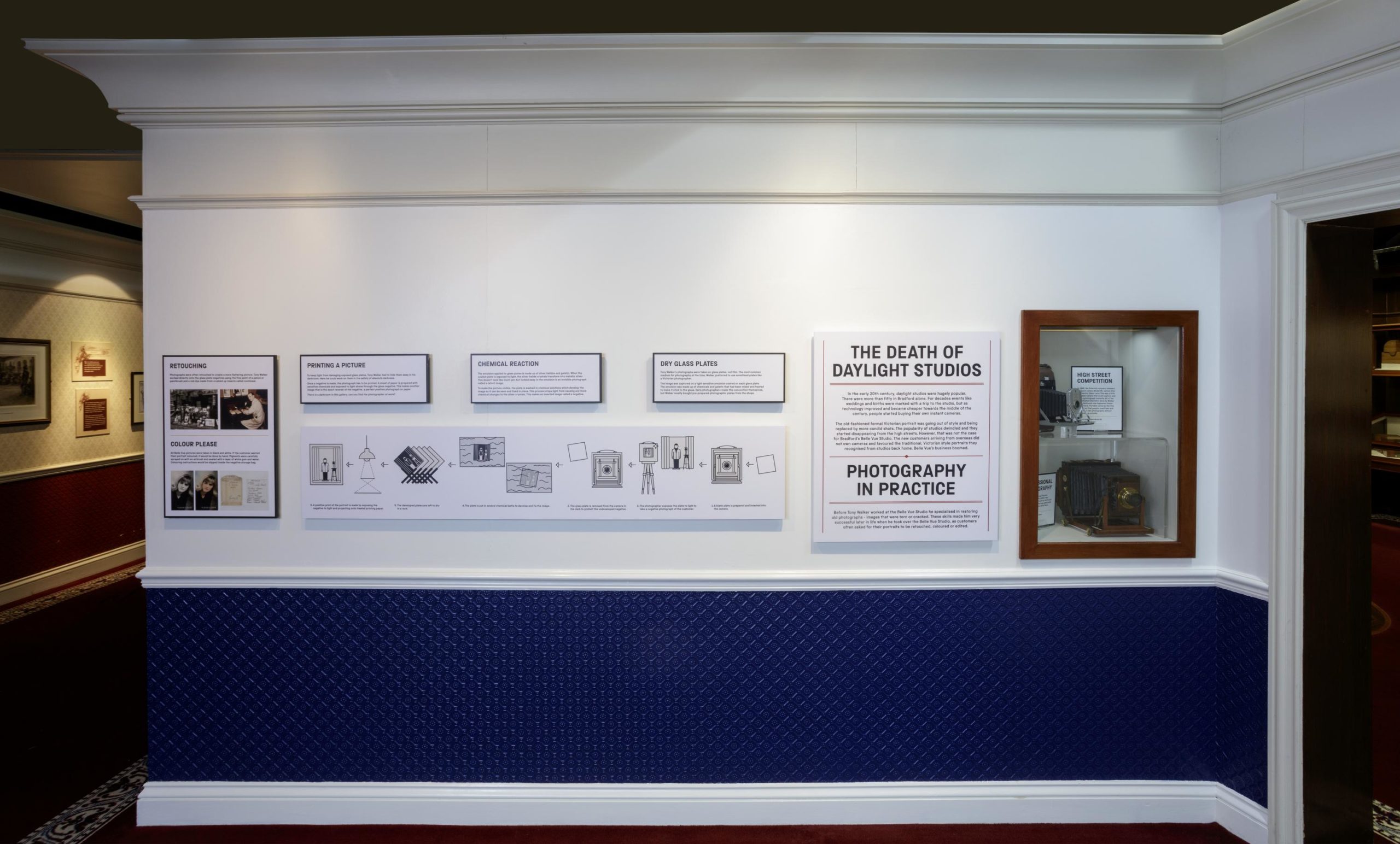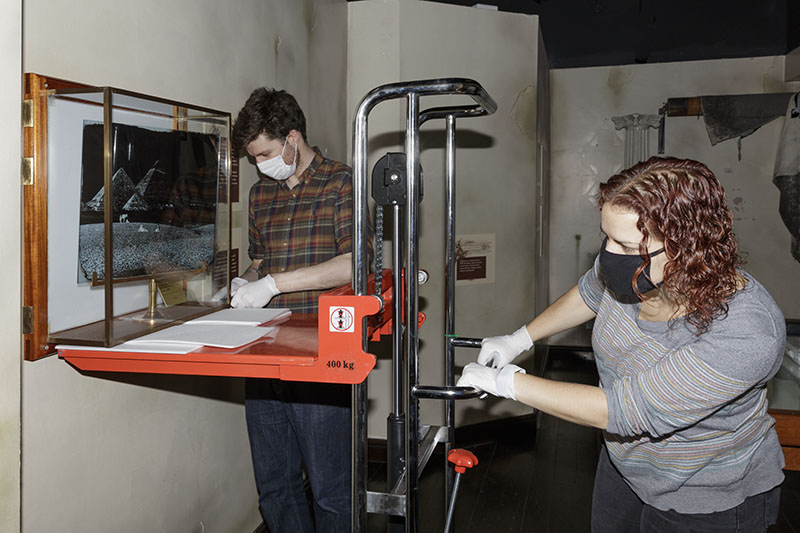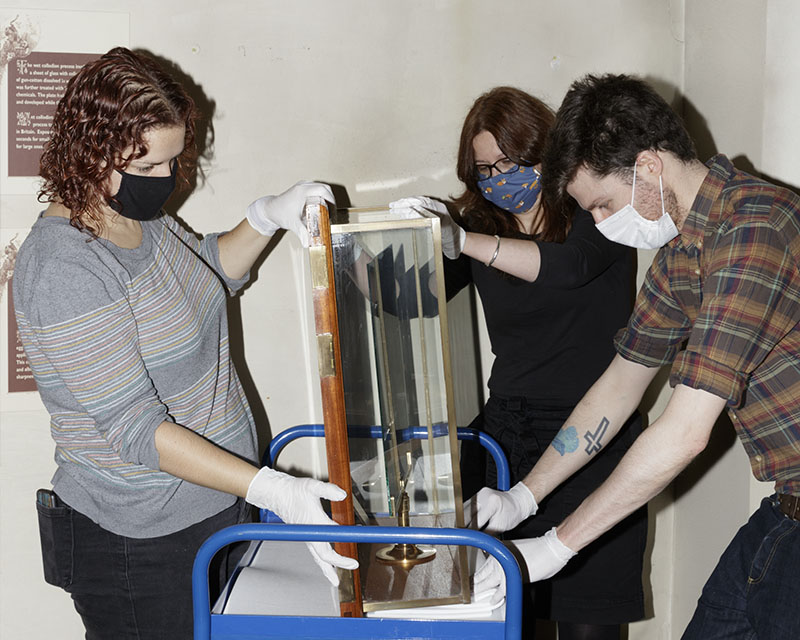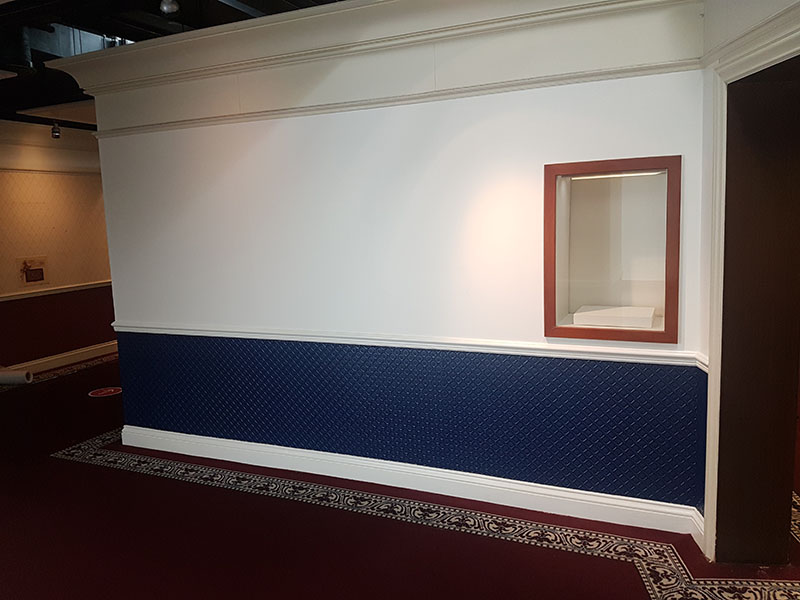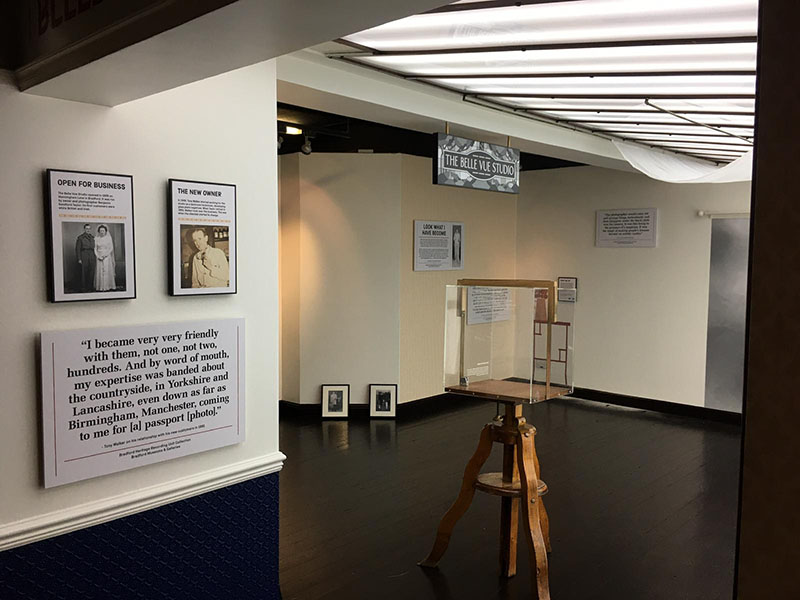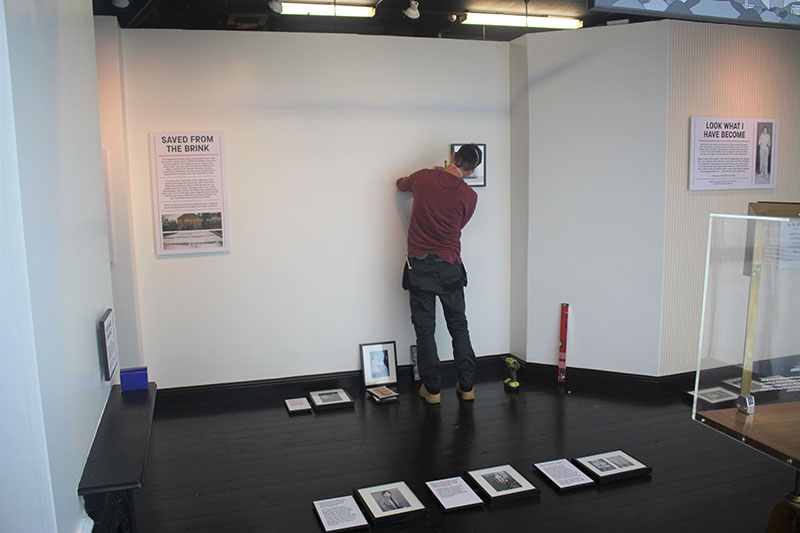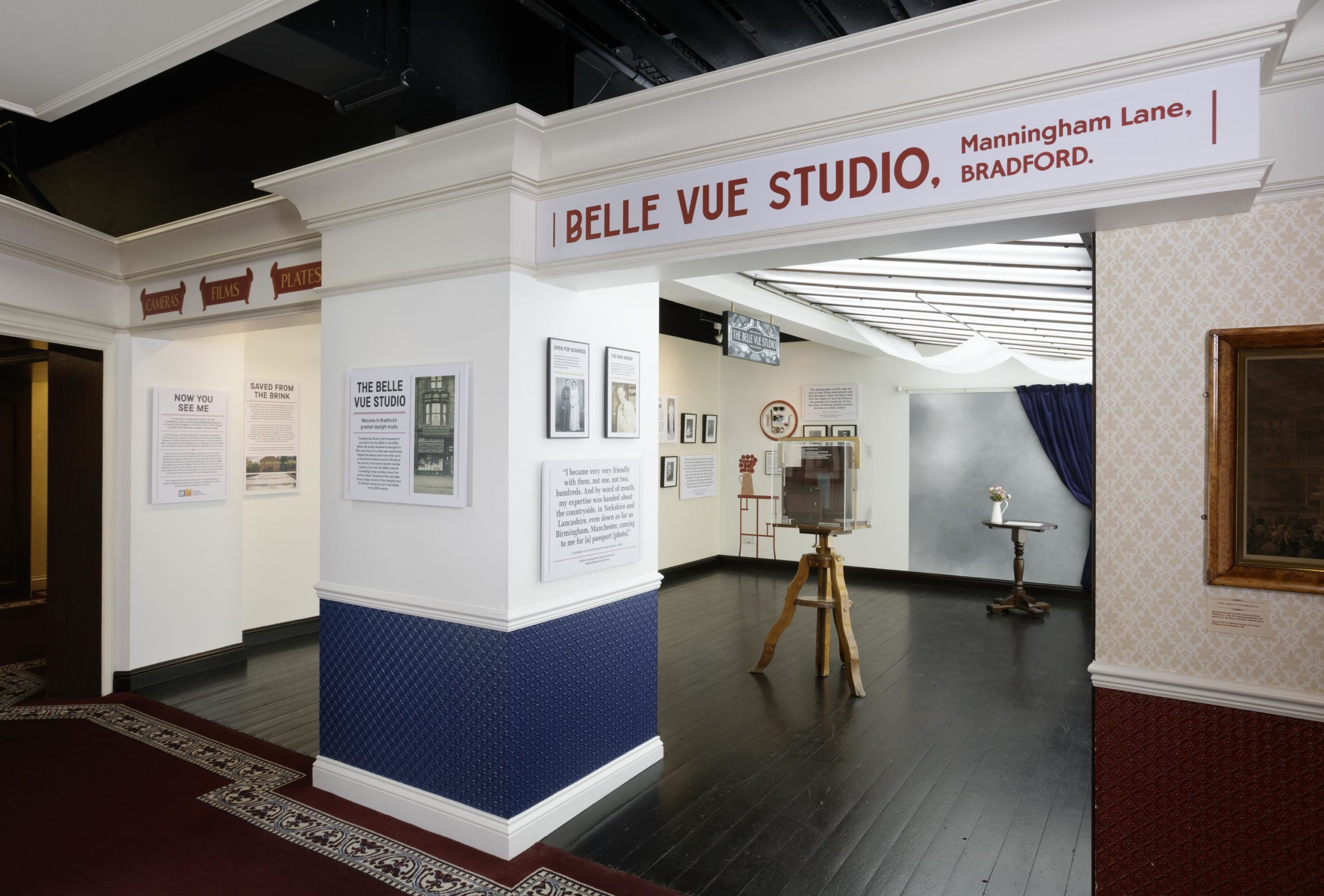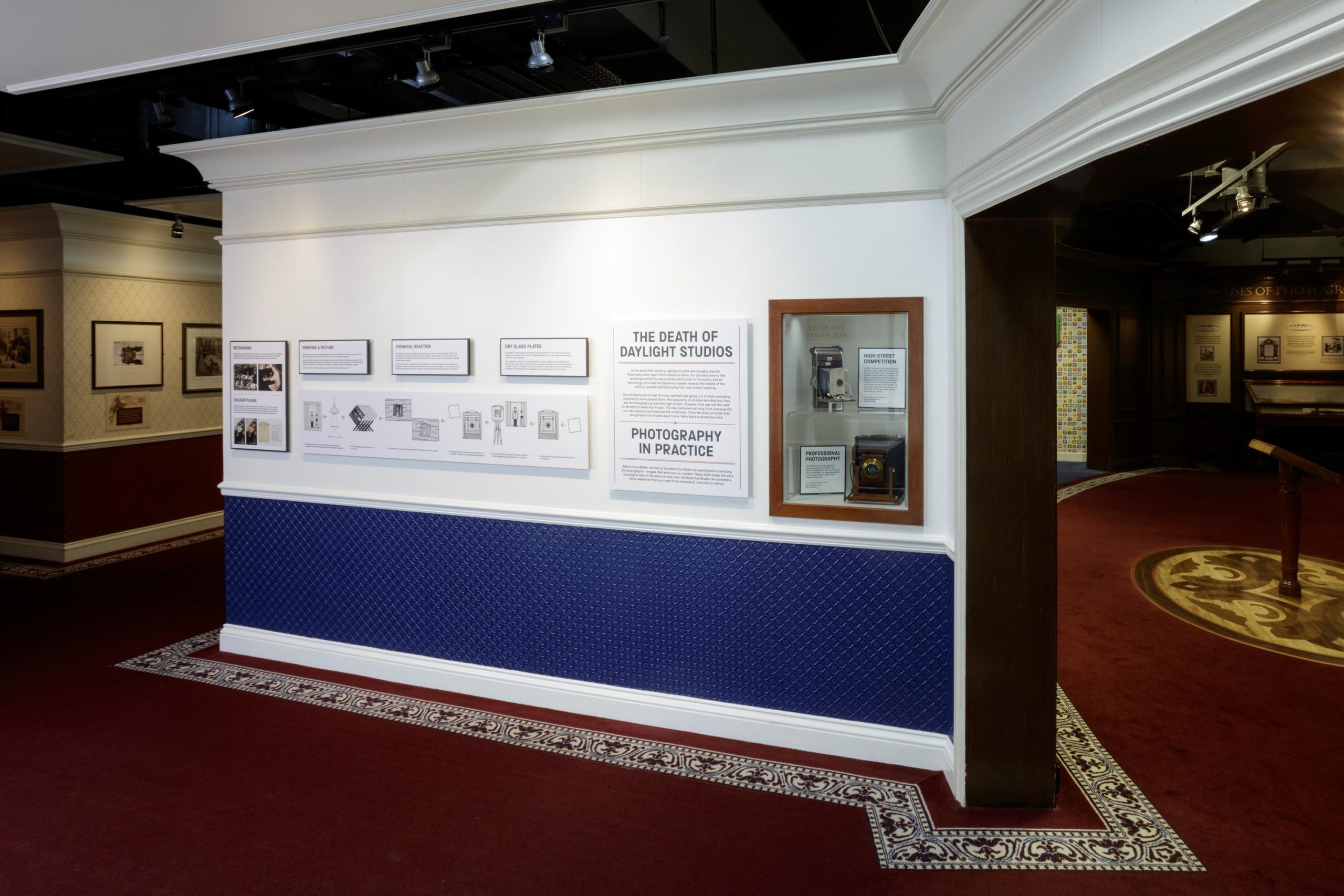Throughout the national lockdowns and museum closures of 2020, teams across the museum have been working hard to provide a new experience for visitors. A section of the Kodak Gallery has been redeveloped to tell a fascinating local story—that of Bradford’s Belle Vue Studio on Manningham Lane. Feast your eyes on the before and after shots of the Daylight Studio space and then read on to discover how we did it.
Above: The Daylight Studio before (left) and after (right) the Belle Vue Studio refresh
How many people does it take to make an exhibition?
A lot! Many teams are involved in making key decisions. One person from each team brings their point of view to fortnightly project meetings. The teams involved in making a new exhibition are:
Interpretation and Curatorial
An Interpretation Developer and Curator are paired up for each new project to work out who the exhibition is for and what it should be about. Together they develop the themes and object list. To really get visitors interested you need good stories—and the Belle Vue is full of them.
Partner
Some exhibitions are developed with a partner; we worked with Bradford Museums & Galleries to produce this one. We shared our plans at several stages to ensure that everyone was happy with the chosen stories and kept up to date with changes. The Belle Vue photographic collection is housed at and looked after by Bradford Industrial Museum.
Project management
The Project Manager has general oversight of everything and is essentially the glue that holds the project together. They plan the schedule, look after the budget, identify risks and work out the logistics of getting contractors on site.
Conservation and Documentation
The record keepers. These teams know what’s what and where it is. They double check that the objects chosen for a new show are stable enough to be on display and what conditions they will need, e.g. the maximum level of light. They oversee the removal of objects from display and the installation of new ones.
Health & Safety and Operations
These teams advise on the design to ensure the new plans are safe for visitors and suitable for the space. Before opening to the public, a Health & Safety Officer will walk around the new installation checking for sharp corners and trip hazards.
Communications
This team makes the work that we do behind the scenes visible to the public. They promote new exhibitions and get news coverage by sending out press releases and calls. They organise interviews for magazines, radio and television. Our online reach is spread through our website, blog posts and social media accounts.
Photography
Our in-house photographer documented the whole process and made digital versions of our objects for online audiences. She took all the great photographs you can see on this page!
External teams
We can’t know or do everything, so we hire designers, mount makers, painters, art technicians, framers and graphic printers to help us bring our plans to reality.
Stop talking, start building
After months of development, it’s finally time to install. For the exhibitions team, this is the most exciting part of the process, when all the different elements finally come together.
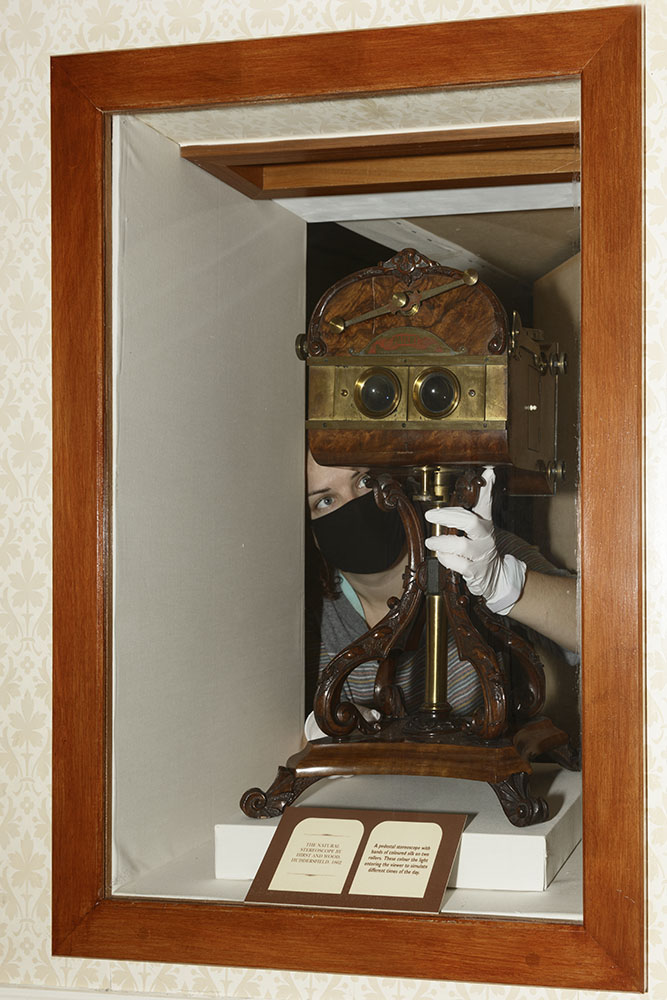
First, the objects from the previous exhibition are taken off public display, condition checked, catalogued and stored. Every time an object is moved, the location must be recorded in the Science Museum Group’s collection database, Mimsy XG. This ensures that objects can be found by anyone looking for it. Every object has basic information stored (size, weight, materials, maker, hazards etc.) to help curators and researchers select objects for new exhibitions.
Above: Phillip, Associate Curator of Photography and Photographic Technology, helps the Conservation and Documentation team to remove a large glass plate from public display
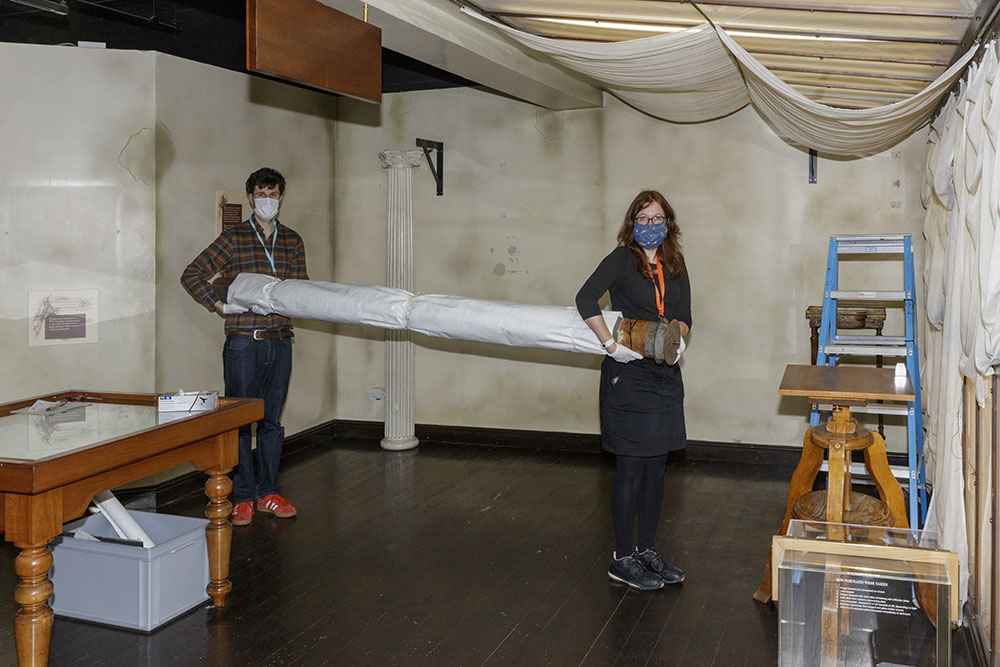
Once the objects have been emptied from the space, the walls can be painted and the floor treated. This needs time to off-gas before new objects can be put in.
The next stage is to install the text panels and framed portraits.
Our art technicians meticulously measure up the panels and frames to make sure everything fits perfectly. The final stage is to install the objects, position the track lighting to highlight the text panels, and do a final clean. Then we are ready to welcome our first visitors.
You can see the Belle Vue Studio display in our Kodak Gallery on Level –1. This is a free permanent exhibition, produced as part of the Bradford’s National Museum research project and funded by the Arts and Humanities Research Council.

